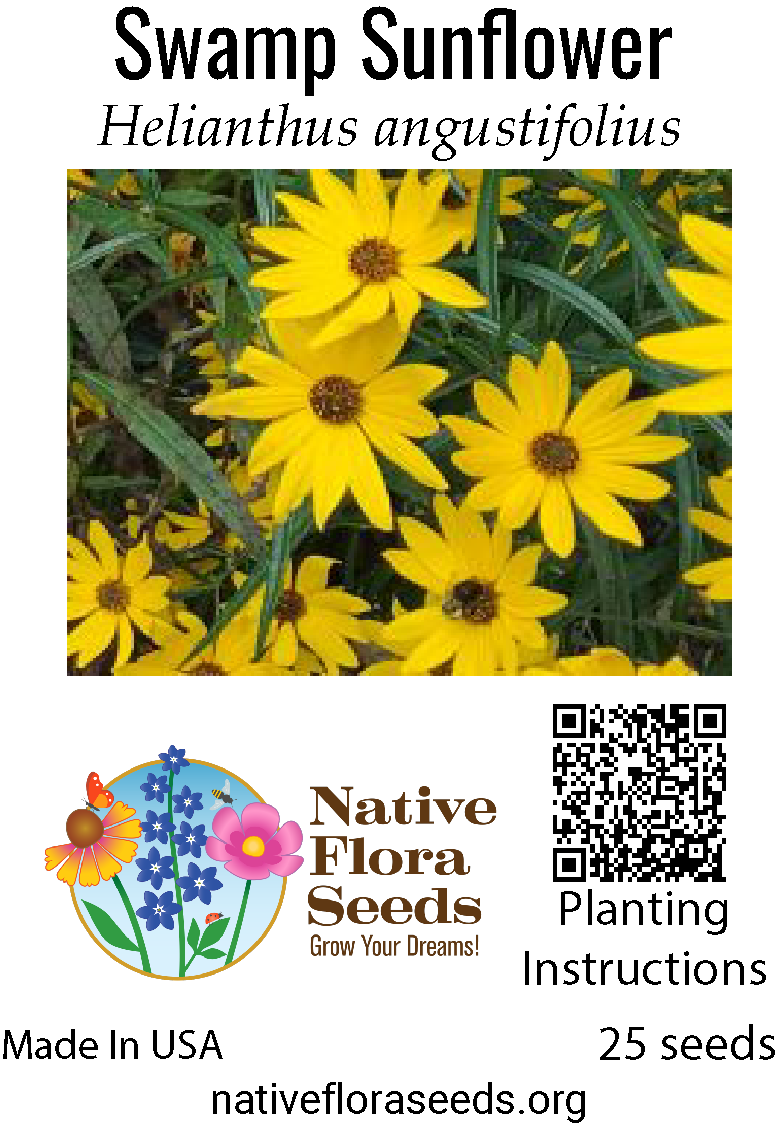Here's a guide to planting Helianthus angustifolius (Swamp Sunflower) seeds in the USA, covering both direct sowing and starting indoors:
Site Selection
Sunlight: Swamp sunflowers thrive in full sun, needing at least 6-8 hours of direct sunlight daily.
Soil: They prefer moist to occasionally wet, acidic to neutral, well-drained soils. They can tolerate some clay or sandy soils, but good drainage is essential.
Location: Choose a spot that allows for their mature size (3-6 feet tall, 2-4 feet wide). They make a great addition to the back of borders, naturalized areas, or near ponds or streams.
Direct Sowing Outdoors
Fall Planting: Sow seeds in the fall before the first frost. This allows for natural stratification over winter.
Spring Planting: Sow seeds in early spring as soon as the soil can be worked.
Soil Preparation:
Clear the area of weeds and debris.
Amend the soil with compost or other organic matter to improve drainage and fertility.
Rake the soil to a fine tilth.
Planting Depth: Sow seeds no more than ¼ inch deep. They need light to germinate.
Spacing: Space seeds about 1-2 feet apart.
Watering: Keep the soil consistently moist until seeds germinate and seedlings are established.
Starting Seeds Indoors
Timing: Start seeds indoors 4-6 weeks before the last expected frost in your area.
Containers: Use seed starting trays or pots with drainage holes.
Soil: Use a sterile seed starting mix.
Planting Depth: Sow seeds ¼ inch deep.
Watering: Keep the soil consistently moist but not soggy.
Light: Provide ample light, either with grow lights or a sunny window.
Transplanting: Harden off seedlings by gradually exposing them to outdoor conditions for a week before transplanting. Transplant after the last frost, spacing plants 1-2 feet apart.
Stratification
Swamp sunflowers benefit from cold stratification. If sowing seeds in the spring, you can mimic this process by placing seeds in a sealed bag with moist sand or vermiculite in the refrigerator for 4-6 weeks before planting.
Scarification
Scarification (scratching or nicking the seed coat) is not necessary for swamp sunflowers.
Maintenance Tips
Watering: Water regularly, especially during dry periods. Swamp sunflowers prefer consistently moist soil.
Fertilizing: They generally don't need fertilizer, but a balanced fertilizer can be applied in early spring.
Staking: Taller plants may need staking to prevent them from flopping over, especially in windy areas.
Deadheading: Remove spent flowers to encourage more blooms.
Pest and Diseases: Watch for common sunflower pests like aphids and sunflower beetles. Diseases like powdery mildew can occur in humid conditions.
Invasiveness
Swamp sunflowers are native to the southeastern US and are not considered invasive in most areas. However, they can spread by rhizomes (underground stems) and self-seeding, so monitor their growth and remove unwanted seedlings if necessary.
Additional Notes
Swamp sunflowers are great for attracting pollinators like bees and butterflies.
They bloom in late summer and fall, providing a splash of color when many other flowers are fading.



